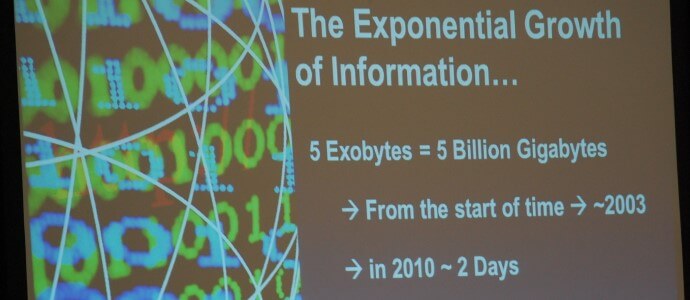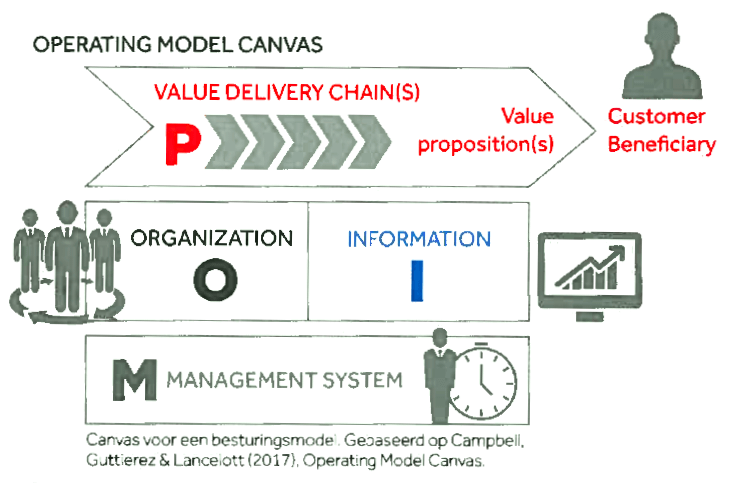Pragmatic Transformation. A holistic approach to adaptive operating models
28 March 2022"People think locally and linearly, but the world today is changing exponentially,’ Peter Diamandis says in his much-discussed "Exponential Thinking" series." Diamandis is an aerospace engineer, entrepreneur, and a New York Times bestselling author who regularly warns of a dangerous gap between our daily perception of change and its actual speed. We often have the impression that developments are slow until a tipping point is suddenly reached: quantitative progression has then led to a qualitative leap. We find ourselves in a different reality.

The need for transformation
Executives not only have to keep a sharp eye on the impact of our super-fast evolving world on their business model. If they want to implement their company’s evolving strategy, they must adapt or redesign their organization. Our contemporary context requires new, modern and adaptive operating models. Built to evolve, not to last forever.
The January Benchmark by TriFinance/Financial Media shows that 8 out of 10 Belgian organizations surveyed are currently undergoing a transformation, having as main objectives improving efficiency and adapting organizational structures to the evolving context.
As recently as 2019, McKinsey found that 70 percent of all transformations fail. The reasons are diverse, including:
- methodological errors (no performance evaluation, no 'transformation office', no processes or tools to manage change in IT and operations)
- too little ambition. Low transformational ambitions can have a negative impact on employee engagement because people do not feel the need for change strongly enough.
We need to get away from the traditional, 'isolated' and project-based transformation. To obtain the participatory change required for an integrated, embedded approach and the flexible, continuous adaptation of organizations, you need a rewiring of both the mindset of employees and the operating system of the organization.'
Alexander Van Caeneghem, BCB Leader, CFO Services
Towards a new, adaptive Operating Model
'For a transformation to succeed,' says CFO Services BCB Leader Alexander Van Caeneghem, 'we need to increase people's willingness to change. We need to get away from the traditional, 'isolated' and project-based transformation. New business challenges and market conditions require an integrated, embedded approach and the flexible, continuous adaptation of organizations. You obtain the participatory change required for this by rewiring both the mindset of employees and the operating system of the organization.'
That adaptive operating model is a framework in which all the parts are connected, although there is a clear sequence for addressing those parts: first processes, then organization, data, and systems. One of the goals of the transformation must be to make these components work together as optimally as possible as a function of the process.
The whole is accompanied by governance that should not be experienced as restrictive, but as facilitating: how do we work together and how do we decide? Governance should be a vehicle that builds trust, ensures that people remain committed to the cause, thereby guaranteeing execution.
End-to-end process thinking becomes a fully-fledged business asset that can make the difference in achieving performance.
Filip Ceulemans, Client Partner, CFO Services
From pain to gain
When a governance model is under pressure, transformation is necessary. Symptoms abound;
- People are stuck in functions and silos; they don’t play to their strengths, and they might very well have an aversion to change.
- Employees experience governance as a straitjacket.
- Processes are automated without analyzing and optimizing them.
'Optimization and redesign of processes lead to better overall performance,' says CFO Services Client Partner Filip Ceulemans. 'Inefficiencies and redundancies are eliminated in the process. Transparency brings commitment and willingness to collaborate, and will ultimately lead to an enterprise-wide culture of continuous improvement. End-to-end process thinking thus becomes a fully-fledged business asset, an asset that can make the difference in achieving performance.' It is also the first, no-pressure step toward a smooth transformation mode that should culminate in an adaptive operating model.

The benefits of a holistic approach
The biggest challenge, however, is to find the methodology that best suits the organization's objectives, the available resources and, not least, the people who will have to internalize and realize the change.
Taking into account various internal, often interdepartmental challenges, it is best to choose a holistic, integrated solution, where co-creation is a driving force. 'Bringing together the energy and ideas of a diverse group often leads to the best solutions, shorter lead times and better alignment. By involving everyone, you mobilize the full potential of the transformation. This is a largely bottom-up approach, albeit within a clear strategic top-down framework,' says Van Caeneghem.
Related content
-
Blog
#takeaways ESG Webinar 12: Navigating the recent changes in the ESG reporting landscape
-
Blog
How the technology of Microsoft Fabric can help you maximize the value of your data
-
Article
How Lakehouse technology can help solve your siloed data problem
-
Blog
EFRAG’s simplified ESRS: what it means and why sustainability reporting still matters
-
Blog
Webinar takeaways: How to deal with common challenges in your data projects
-
Article
Why CFOs can’t afford to ignore Data Engineering in 2025
-
Career as Consultant
Junior Finance Consultant | Public Sector
-
Career as Consultant
Medior Finance Consultant | Public Sector
-
Career as Consultant
Senior Finance consultant | Public sector
-
Career as Consultant
Junior Consultant Public Procurement | Public Sector
-
Career as Consultant
Medior Consultant Public Procurement | Public Sector
-
Career as Consultant
Senior Consultant Public Procurement | Public Sector